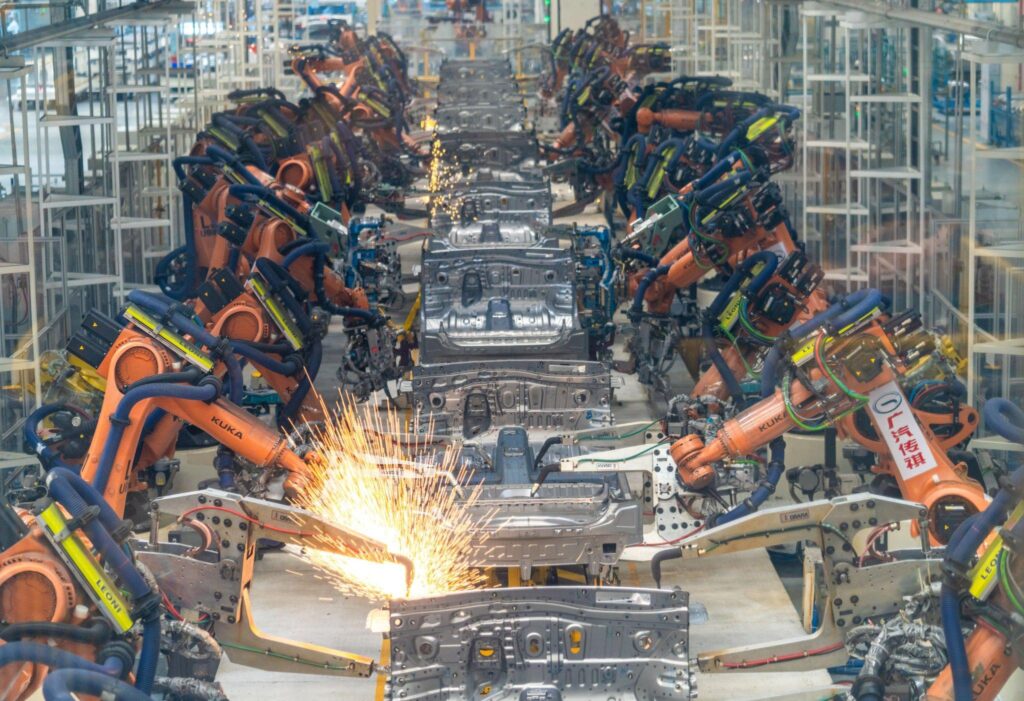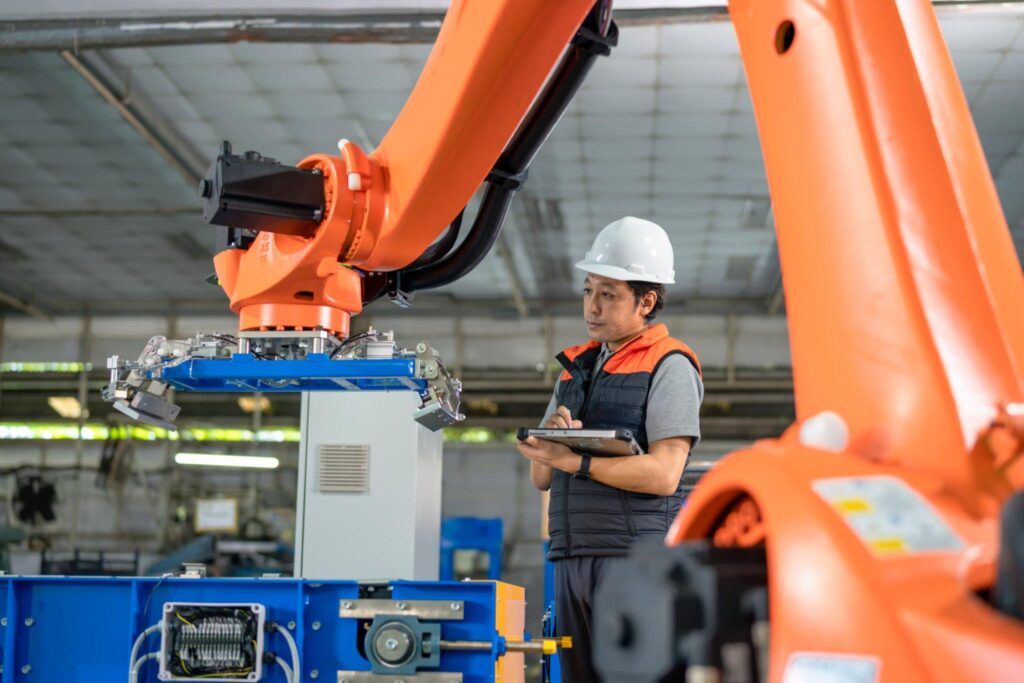Robots The Future Best of Automation
In the ever-evolving landscape of technology, few innovations have captured the human imagination quite like robots. These mechanical marvels have found their way into nearly every aspect of modern society, from manufacturing floors to operating rooms, from farms to the depths of space. In this article, we will embark on a journey through the world of robots, exploring their historical evolution, diverse types, roles in various industries, and the ethical considerations that surround them. Join us as we unravel the fascinating world of robotics.
Table of Contents
Introduction
A. The Rise of Robots in Modern Society
The 21st century has witnessed a remarkable rise in the prevalence of robots. No longer confined to the realm of science fiction, robots have become integral to our daily lives. But how did we get here, and what drives our fascination with these mechanical beings?
B. The Fascination with Robotics
From the early days of literature and film to today’s cutting-edge technology, the allure of robotics has captivated human imagination. We’ll explore the roots of this fascination and how it has influenced the development of robotics.
Historical Evolution of Robots
A. Early Automatons
The concept of automata dates back to ancient civilizations, where intricate mechanical figures were designed to mimic human actions. Discover the origins of these early automatons and their role in shaping the path to modern robotics.
B. Industrial Revolution and Automation
The Industrial Revolution marked a turning point in automation. Explore how machinery and assembly lines laid the foundation for the robots we know today.
C. Emergence of Modern Robotics
1. Influence of Sci-Fi on Robot Pop Culture
Science fiction literature and cinema have played a significant role in shaping our perception of robots. We’ll delve into how fictional portrayals have influenced the development of real-world robotics.
2. Notable Milestones in Robotics
From the first programmable robot to the latest breakthroughs in artificial intelligence, we’ll highlight the key milestones that have propelled robotics into the 21st century.
Types of Robots
A. Industrial Robots
1. Manufacturing Robots
Manufacturing robots have revolutionized the production industry. We’ll examine their impact on efficiency and quality in manufacturing processes.
2. Welding Robots
Welding robots have transformed the welding industry. Learn how they enhance precision and safety in welding operations.
B. Service Robots
1. Healthcare Robots
Robots have found a place in healthcare, assisting doctors and nurses in various tasks. Discover how these robot are improving patient care.
2. Domestic Robot
In our homes, robot are becoming our companions and helpers. Explore the role of domestic robot in simplifying daily chores.
C. Military Robot
The military has embraced robotic technology for various applications. We’ll discuss the role of military robot in reconnaissance, surveillance, and combat.
D. Agricultural Robots
Agriculture is undergoing a robotic revolution. Learn how agricultural robot are enhancing crop production and sustainability.
E. Robotic Vehicles
1. Self-Driving Cars
Self-driving cars are poised to change the way we travel. Explore the technology behind autonomous vehicles and their potential impact.
2. Drones
Drones have become ubiquitous in various industries. Discover the versatility of these aerial robot, from photography to delivery.
The Role of Robots in Various Industries

A. Manufacturing and Automation
Robot have transformed manufacturing, optimizing production lines and ensuring consistency. We’ll explore their crucial role in modern factories.
B. Healthcare and Medicine
In healthcare, robots are assisting with surgeries, patient care, and drug dispensing. Learn how they are contributing to improved healthcare outcomes.
C. Agriculture and Farming
Robotic agriculture is increasing efficiency and sustainability. Explore the transformative impact of robotics on modern agricultural methods.
D. Space Exploration
Robots have ventured into the cosmos, exploring distant planets and asteroids. We’ll delve into their role in space exploration.
E. Military and Defense
The military relies on robot for surveillance and dangerous missions. Explore how these machines are shaping modern warfare.
How Robot Work

A. Sensors and Perception
Robots perceive the world through sensors. We’ll explain how sensors enable robot to interact with their environment.
B. Actuators and Movement
Movement is a defining characteristic of robot. Learn how actuators allow robots to navigate and perform tasks.
C. Control Systems
Control systems are the brains behind robots. Discover how these systems dictate a robot’s actions.
D. Artificial Intelligence in Robotics
Contemporary robotics relies on the core foundation of artificial intelligence. We’ll explore how AI enhances a robot’s decision-making capabilities.
Ethical Considerations in Robotics

A. Asimov’s Three Laws of Robotics
Science fiction author Isaac Asimov proposed three ethical laws for robot. We’ll examine these laws and their relevance in real-world robotics.
B. Privacy Concerns
As robots become more integrated into our lives, privacy concerns arise. Explore the implications of robot in our personal spaces.
C. The Impact on Employment
The rise of automation and robots raises questions about the future of employment. We’ll discuss the potential consequences for the job market.
Challenges in Robotics

A. Technical Challenges
Robotics is not without its hurdles. We’ll outline the technical challenges that engineers and scientists face in advancing the field.
B. Safety Concerns
Safety is paramount in robotics. Discover the measures in place to ensure the safe operation of robots.
C. Legal and Regulatory Issues
The rapid advancement of robotics has outpaced legal and regulatory frameworks. We’ll delve into the evolving landscape of robot-related laws.
Robotics in Popular Culture
A. Iconic Robot in Movies and TV
From R2-D2 to the Terminator, iconic robots have left a lasting mark on pop culture. Explore the impact of these fictional characters.
B. The Influence of Robotics in Literature
Literature has long been a source of inspiration for roboticists. We’ll uncover the literary works that have shaped the field.
C. Video Games and Robotics
Video games offer a virtual playground for robotic adventures. Discover how gaming has contributed to the portrayal of robots.
Robotics Research and Innovation
A. Prominent Robotics Research Institutions
Leading institutions drive innovation in robotics. We’ll introduce you to the organizations at the forefront of research.
B. Breakthroughs in Robotic Technology
Exciting breakthroughs are occurring in the world of robotics. Learn about the latest advancements and their potential implications.
C. Future Trends in Robotics
What does the future hold for robotics? We’ll explore emerging trends and their impact on society.
Conclusion
As we conclude our journey through the world of robots, it’s evident that these mechanical marvels have transformed society in ways previously unimaginable. From their humble beginnings as ancient automatons to their current roles in healthcare, manufacturing, and space exploration, robot have become indispensable companions in our modern world.
The future of robotics promises even greater innovation and integration into our lives, presenting both exciting opportunities and daunting challenges. As we navigate this ever-evolving landscape, it is essential to approach robotics with a careful balance of enthusiasm and ethical consideration. The ongoing impact of robots on society will undoubtedly continue to shape our world, and it is up to us to ensure that this impact is a positive one.
FAQs
What is the Uncanny Valley in robotics, and why is it important?
The Uncanny Valley is a concept in robotics and AI where a humanoid robot that appears almost human but not quite can evoke feelings of eeriness and discomfort in humans. It’s important because it highlights the delicate balance between creating robots that are relatable and those that are unsettling, which has implications for user acceptance and emotional engagement.
What are swarm robot, and how are they used in various industries?
Swarm robot are a group of simple robot that work together, often mimicking the behavior of social insects like ants or bees. They are used in agriculture for crop monitoring, search and rescue missions, and even in space exploration for tasks like planetary exploration.
Can robots have emotions?
Robot can simulate emotions using artificial intelligence and expressive behaviors, but they don’t possess genuine emotions like humans. These simulated emotions are designed to facilitate human-robot interaction and improve communication.
What is the Turing Test, and how does it relate to robotics?
The Turing Test serves as a benchmark for assessing a machine’s capacity to display intelligent conduct indistinguishable from that of a human being. In the context of robotics, passing the Turing Test would mean that a robot can interact with humans in a way that is convincingly human-like in its responses and actions.
How do robots contribute to environmental sustainability?
Robot contribute to environmental sustainability by optimizing resource use and reducing waste in various industries. For instance, in agriculture, they can precisely apply fertilizers and pesticides, reducing chemical usage and environmental impact. In manufacturing, robot can minimize material waste through precise cutting and production processes, leading to more sustainable practices.

